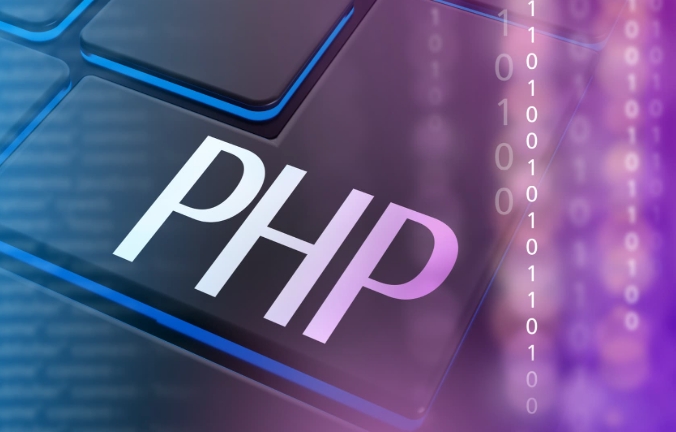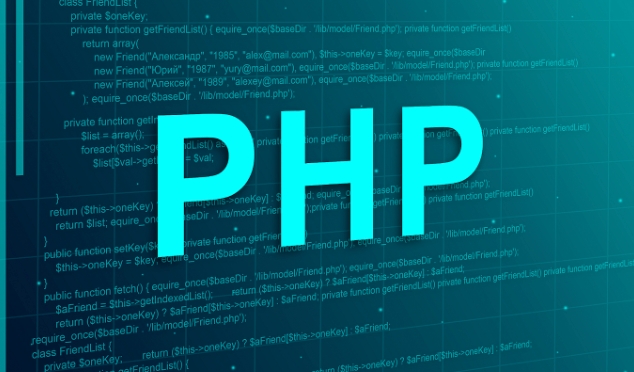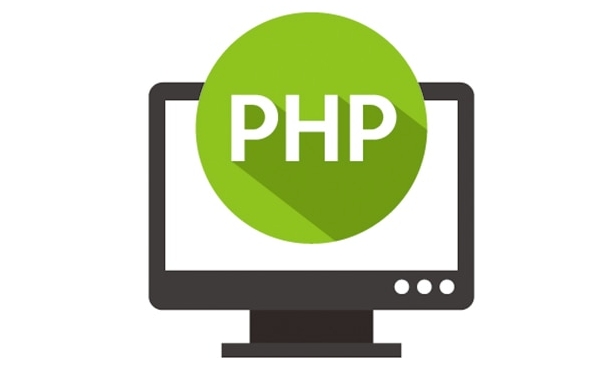 Backend Development
Backend Development
 PHP Tutorial
PHP Tutorial
 PHP beginner guide: Detailed explanation of local environment configuration
PHP beginner guide: Detailed explanation of local environment configuration
PHP beginner guide: Detailed explanation of local environment configuration
Jun 27, 2025 am 02:09 AMTo set up a PHP development environment, you need to select the appropriate tools and install the configuration correctly. ①The most basic PHP local environment requires three components: the web server (Apache or Nginx), PHP itself and database (such as MySQL/MariaDB); ② It is recommended that beginners use integration packages such as XAMPP or MAMP, which simplify the installation process. XAMPP is suitable for Windows and macOS. After installation, the project files are placed in the htdocs directory and accessed through localhost; ③MAMP is suitable for Mac users and supports convenient switching of PHP versions, but the free version has limited functions; ④ Advanced users can manually install them by Homebrew, and can achieve more flexible control in macOS/Linux systems through terminal commands; ⑤ Common precautions include ensuring that the port is not occupied, the PHP version matches project requirements, enabling necessary extensions, and setting permissions correctly. After the configuration is completed, the environment usually runs stably, which facilitates subsequent development and problem investigation.

Setting up a PHP development environment might seem daunting if you're just starting out, but it's actually straightforward once you understand the key components involved. You don't need to overcomplicate things—just get a few tools working together and you're good to go.

What do you really need for a PHP local environment?
A basic PHP setup requires three main pieces: a web server, PHP itself, and a database. The most common combo is Apache (or Nginx), PHP, and MySQL/MariaDB. These are often packaged together in tools that simplify installation.

- Apache or Nginx : Handles HTTP requests and serves your PHP files.
- PHP : Processes the actual PHP code and returns HTML to the browser.
- MySQL / MariaDB : Stores data for dynamic websites like blogs or user systems.
You can install each separately, but beginners usually benefit more from using an all-in-one package.
Option 1: Use XAMPP (great for Windows and macOS)
XAMPP is one of the easiest ways to get started. It bundles Apache, PHP, MySQL, and phpMyAdmin—all in one installer.

How to set it up:
- Download XAMPP from the official site (make sure it matches your OS).
- Run the installer and choose where to install it (default is fine).
- Start Apache and MySQL from the XAMPP control panel.
- Put your PHP files into the
htdocsfolder inside the XAMPP directory. - Access them via
http://localhost/your-folder-name.
A common mistake is trying to run XAMPP on a system where port 80 is already taken (like by Skype or IIS). If Apache doesn't start, check which app is using port 80 and either stop it or change Apache's port in the config.
Option 2: MAMP (another solid choice, especially for Mac users)
MAMP works similarly to XAMPP but is known for being smoother on macOS. It also lets you easily switch between PHP versions.
Key points when using MAMP:
- The default document root is
htdocsunder the MAMP folder, not system-wide/Applications. - To use localhost paths like
http://localhost:8888/myproject, place your project in the correct htdocs folder. - You can change the ports if needed (eg, to avoid using 8888 and go straight to port 80).
One thing to note: MAMP Free version has some limitations, so if you want advanced features like command-line access to PHP, you may want to look into the Pro version or another method.
Option 3: Manual setup with Homebrew (for macOS/Linux users who like control)
If you prefer more control and are comfortable with the terminal, installing PHP and related tools manually can be rewarding.
Basic steps:
- Install Homebrew if you haven't already (
/bin/bash -c "$(curl -fsSL https://raw.githubusercontent.com/Homebrew/install/HEAD/install.sh)") - Install PHP:
brew install php - Install MySQL:
brew install mysql - Start services:
brew services start mysqlandbrew services start php - Set up your document root and configure
php.inias needed
This gives you a cleaner, more modern setup, but troubleshooting issues like path problems or missing extensions can take time if you're new.
A few gotchas to watch out for
- Make sure your PHP version matches what your project needs. Some older projects won't work well with PHP 8.
- Extensions like
mysqli,pdo, andmbstringare commonly needed—check they're enabled inphp.ini. - Permissions matter, especially on Linux/macOS. Your web server must have read access to your project files.
Basically that's it. Once everything is running, you'll barely think about the environment again unless something breaks. And even then, knowing how each piece fits together make debugging much easier.
The above is the detailed content of PHP beginner guide: Detailed explanation of local environment configuration. For more information, please follow other related articles on the PHP Chinese website!

Hot AI Tools

Undress AI Tool
Undress images for free

Undresser.AI Undress
AI-powered app for creating realistic nude photos

AI Clothes Remover
Online AI tool for removing clothes from photos.

Clothoff.io
AI clothes remover

Video Face Swap
Swap faces in any video effortlessly with our completely free AI face swap tool!

Hot Article

Hot Tools

Notepad++7.3.1
Easy-to-use and free code editor

SublimeText3 Chinese version
Chinese version, very easy to use

Zend Studio 13.0.1
Powerful PHP integrated development environment

Dreamweaver CS6
Visual web development tools

SublimeText3 Mac version
God-level code editing software (SublimeText3)

Hot Topics
 How do I stay up-to-date with the latest PHP developments and best practices?
Jun 23, 2025 am 12:56 AM
How do I stay up-to-date with the latest PHP developments and best practices?
Jun 23, 2025 am 12:56 AM
TostaycurrentwithPHPdevelopmentsandbestpractices,followkeynewssourceslikePHP.netandPHPWeekly,engagewithcommunitiesonforumsandconferences,keeptoolingupdatedandgraduallyadoptnewfeatures,andreadorcontributetoopensourceprojects.First,followreliablesource
 What is PHP, and why is it used for web development?
Jun 23, 2025 am 12:55 AM
What is PHP, and why is it used for web development?
Jun 23, 2025 am 12:55 AM
PHPbecamepopularforwebdevelopmentduetoitseaseoflearning,seamlessintegrationwithHTML,widespreadhostingsupport,andalargeecosystemincludingframeworkslikeLaravelandCMSplatformslikeWordPress.Itexcelsinhandlingformsubmissions,managingusersessions,interacti
 How to set PHP time zone?
Jun 25, 2025 am 01:00 AM
How to set PHP time zone?
Jun 25, 2025 am 01:00 AM
TosettherighttimezoneinPHP,usedate_default_timezone_set()functionatthestartofyourscriptwithavalididentifiersuchas'America/New_York'.1.Usedate_default_timezone_set()beforeanydate/timefunctions.2.Alternatively,configurethephp.inifilebysettingdate.timez
 How do I validate user input in PHP to ensure it meets certain criteria?
Jun 22, 2025 am 01:00 AM
How do I validate user input in PHP to ensure it meets certain criteria?
Jun 22, 2025 am 01:00 AM
TovalidateuserinputinPHP,usebuilt-invalidationfunctionslikefilter_var()andfilter_input(),applyregularexpressionsforcustomformatssuchasusernamesorphonenumbers,checkdatatypesfornumericvalueslikeageorprice,setlengthlimitsandtrimwhitespacetopreventlayout
 What is data serialization in PHP (serialize(), unserialize())?
Jun 22, 2025 am 01:03 AM
What is data serialization in PHP (serialize(), unserialize())?
Jun 22, 2025 am 01:03 AM
ThePhpfunctionSerialize () andunserialize () AreusedtoconvertcomplexdaTastructdestoresintostoraSandaBackagain.1.Serialize () c OnvertsdatalikecarraysorobjectsraystringcontainingTypeandstructureinformation.2.unserialize () Reconstruct theoriginalatataprom
 How do I embed PHP code in an HTML file?
Jun 22, 2025 am 01:00 AM
How do I embed PHP code in an HTML file?
Jun 22, 2025 am 01:00 AM
You can embed PHP code into HTML files, but make sure that the file has an extension of .php so that the server can parse it correctly. Use standard tags to wrap PHP code, insert dynamic content anywhere in HTML. In addition, you can switch PHP and HTML multiple times in the same file to realize dynamic functions such as conditional rendering. Be sure to pay attention to the server configuration and syntax correctness to avoid problems caused by short labels, quotation mark errors or omitted end labels.
 What are the best practices for writing clean and maintainable PHP code?
Jun 24, 2025 am 12:53 AM
What are the best practices for writing clean and maintainable PHP code?
Jun 24, 2025 am 12:53 AM
The key to writing clean and easy-to-maintain PHP code lies in clear naming, following standards, reasonable structure, making good use of comments and testability. 1. Use clear variables, functions and class names, such as $userData and calculateTotalPrice(); 2. Follow the PSR-12 standard unified code style; 3. Split the code structure according to responsibilities, and organize it using MVC or Laravel-style catalogs; 4. Avoid noodles-style code and split the logic into small functions with a single responsibility; 5. Add comments at key points and write interface documents to clarify parameters, return values ??and exceptions; 6. Improve testability, adopt dependency injection, reduce global state and static methods. These practices improve code quality, collaboration efficiency and post-maintenance ease.
 How do I execute SQL queries using PHP?
Jun 24, 2025 am 12:54 AM
How do I execute SQL queries using PHP?
Jun 24, 2025 am 12:54 AM
Yes,youcanrunSQLqueriesusingPHP,andtheprocessinvolveschoosingadatabaseextension,connectingtothedatabase,executingqueriessafely,andclosingconnectionswhendone.Todothis,firstchoosebetweenMySQLiorPDO,withPDObeingmoreflexibleduetosupportingmultipledatabas





